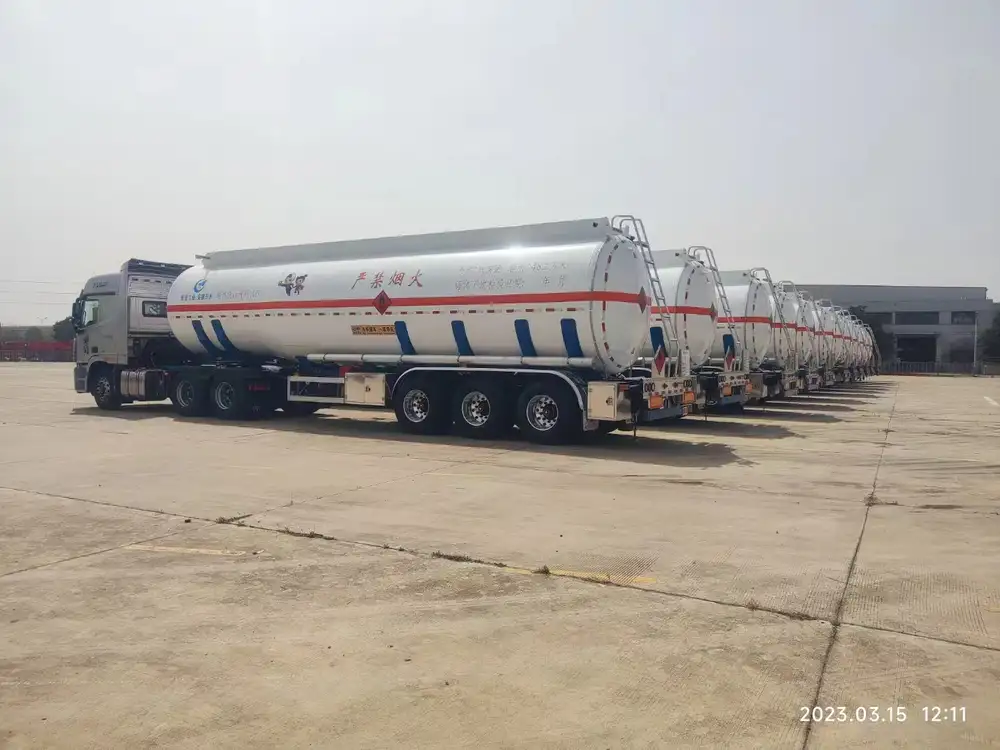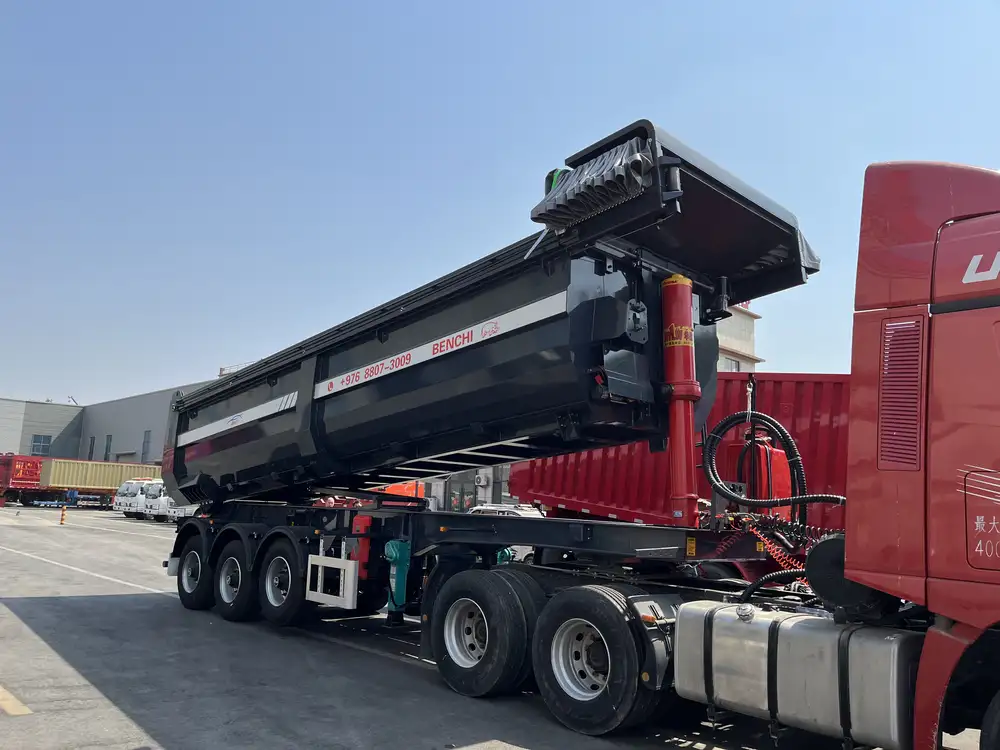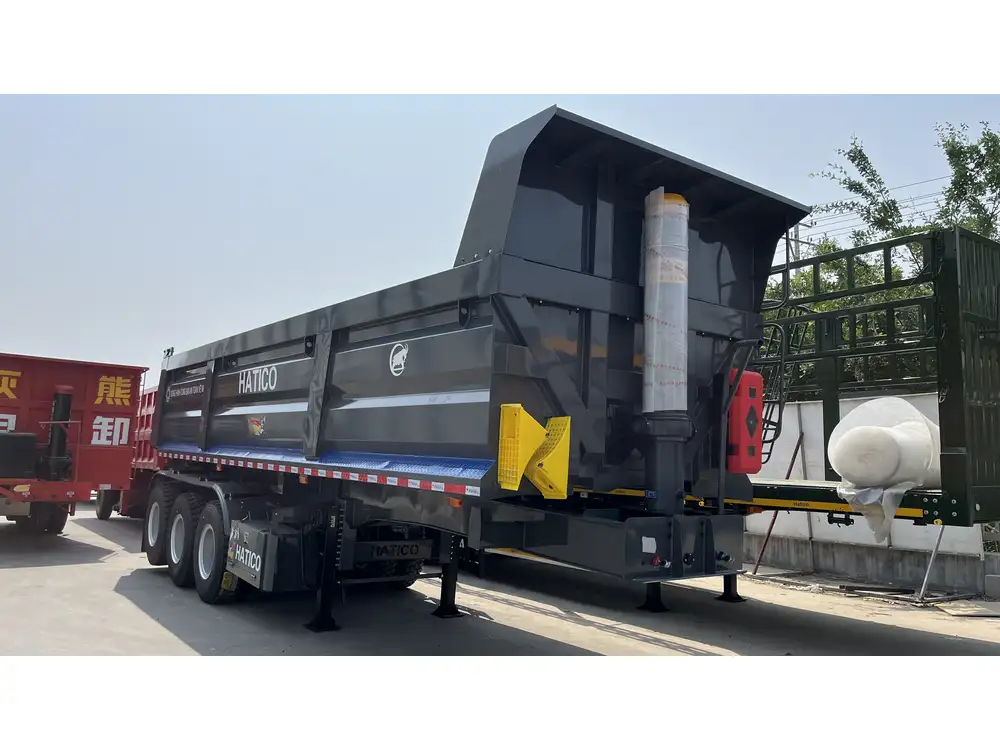Introduction: The Importance of Parking Brake Functionality
In the realm of heavy-duty transport, the semi-trailer stands as a quintessential mode of moving goods across vast distances. However, the effectiveness of this transportation method heavily relies on the operational integrity of its components, particularly the parking brake. The parking brake serves not only as a vital safety mechanism to prevent unintended movement but also ensures compliance with regulations in various operational contexts. When the parking brake fails to engage, the repercussions can be severe, including accidents, legal issues, and potential loss of cargo. This comprehensive analysis delves into the potential reasons behind a malfunctioning semi-trailer parking brake, aiming to equip operators, fleet managers, and technicians with actionable insights for troubleshooting and resolution.
The Mechanics of a Semi-Trailer Parking Brake
To grasp the complexity of parking brake failures, it’s essential to have a foundational understanding of its mechanics. A typical semi-trailer braking system comprises air brakes, which utilize compressed air to apply pressure on brake drums or discs. The parking brake, a subset of this system, is designed to engage automatically when the air pressure drops below a specified threshold. It’s controlled by a lever inside the cab that, when pulled, engages the brake mechanism.

Key Components of the Parking Brake System
| Component | Function |
|---|---|
| Brake Chambers | Converts air pressure into mechanical force to engage the brakes. |
| Slack Adjusters | Maintain proper brake adjustment over time. |
| Air Reservoir | Stores compressed air for brake operation. |
| Parking Brake Valve | Controls the air supply to the parking brake mechanism. |
| Brake Pads/Drums | Provides friction for stopping the trailer. |
Common Causes of Parking Brake Failures
Understanding the following common issues can help operators diagnose and resolve problems quickly. Each listed cause is elaborated below, enhancing comprehension and facilitating effective troubleshooting.
1. Air Leaks in the System
Explanation: Air leaks can significantly reduce the pressure needed for the parking brake to engage. This can occur at various points within the system, including the connections, valves, and hoses.
Symptoms to Observe:
- Audible hissing sounds when the brakes are engaged.
- Insufficient pressure indicated on the gauge.
- Extended engagement time of the brake.

2. Faulty Parking Brake Valve
Explanation: The parking brake valve plays a crucial role in the engagement process. A malfunction may arise due to internal wear or contamination, preventing it from functioning properly.
Diagnosis Tips:
- Inspect for visible signs of damage or buildup.
- Test the valve operation by manually engaging the brake.
3. Worn Brake Pads or Drums
Explanation: Over time, brake pads or drums can wear down, diminishing the effectiveness of the parking brake. Insufficient friction results in a lack of holding power.
Indicators of Wear:
- Unusual noises when braking.
- Reduced effectiveness of braking power.
- Visualization of uneven wear patterns.
4. Slack Adjuster Issues
Explanation: Slack adjusters are mechanical devices that maintain brake performance by compensating for wear. If slack adjusters are malfunctioning, they may not engage the brakes fully.
Signs to Look For:
- Difficulty in adjusting the brakes manually.
- Visual inspection indicating excessive slack or incorrect positioning.

5. Insufficient Air Pressure
Explanation: A drop in air pressure, often caused by leaks or failing compressors, can inhibit the parking brake’s engagement.
Pressure Check Protocol:
- Regularly inspect the air compressor for functionality.
- Monitor the air pressure gauge for consistent readings.
6. Corrosion or Contamination
Explanation: Corrosion from moisture or contaminants can impede the function of various components, including valves, lines, and chambers.
Preventive Measures:
- Regular maintenance and inspections.
- Application of protective coatings to susceptible parts.
Troubleshooting Steps for Parking Brake Issues
Taking a systematic approach to troubleshooting can mitigate issues effectively. Here’s a detailed step-by-step guide to diagnosing your semi-trailer parking brake problems.

Step 1: Conduct a Visual Inspection
Begin by visually inspecting the entire braking system. Look for:
- Cracked or damaged hoses.
- Signs of rust or corrosion.
- Loose connections.
Step 2: Test Air Pressure Levels
Utilize an air pressure gauge to measure:
- The air pressure in the system when the parking brake is supposed to be engaged.
- The air pressure in the reservoirs to ensure it’s sufficiently charged.
Step 3: Examine the Parking Brake Valve
Delve deeper into the parking brake valve, following these steps:
- Disconnect the air supply and manually engage the brake.
- Observe whether the mechanism engages smoothly or if resistance occurs.

Step 4: Inspect and Adjust Slack Adjusters
Check the slack adjusters as follows:
- Manually adjust them according to manufacturer specifications.
- Verify that they maintain proper tension when engaging the brake.
Step 5: Service Brake Pads and Drums
Assess the condition of the brake pads and drums regularly. Replace them if you observe:
- Significant wear or damage.
- Discoloration indicating overheating.
Step 6: Verify Compressor and Air Reservoir Functionality
Check the air compressor and reservoirs by performing these tests:
- Listen for unusual noises from the compressor, which can signify wear.
- Ensure the air reservoirs are adequately supplying the system under load.

Preventive Maintenance Tips
Preventing parking brake failures not only enhances safety but also prolongs the life of your semi-trailer. Implementing a robust maintenance schedule is imperative.
1. Regular Inspection Intervals
Establish a routine check system for all brake components. This includes scheduled checks every 6,000 miles or every three months, whichever comes first.
2. Stay Informed on Best Practices
Keeping abreast of manufacturer guidelines is crucial. Many operators overlook the nuances of best practices outlined in owner manuals.

3. Invest in Quality Parts
Utilize OEM (Original Equipment Manufacturer) parts for replacements to ensure compatibility and effectiveness.
4. Conduct Brake System Tests
Periodic performance testing—including dynamic braking tests—can highlight issues before they escalate into safety hazards.
5. Educate Yourself and Your Team
Training and educating all personnel on brake systems can drastically reduce the likelihood of operational errors and malfunctions.

The Way Forward
Addressing issues related to a malfunctioning parking brake requires methodical attention to detail, an understanding of the braking system, and proactive maintenance. Engaging with the common causes detailed above, informed troubleshooting steps, and preventive maintenance protocols will ensure that your semi-trailer remains safe, compliant, and operational.
Should malfunctions persist despite thorough diagnostics and maintenance, it is advisable to consult with a qualified technician experienced in heavy-duty trailer systems. Ignoring signs of trouble can lead to not only financial implications but pose serious safety risks on the road.
By maintaining vigilance and incorporating these strategies, you can leverage the operational efficiency of your semi-trailer while safeguarding the lives of those on the road. Secure and effective parking brake functionality is not merely a requirement—it is paramount in fostering reliability in your transport operations.



